We picked 7 different types of chopping boards, from wood to plastic and marble – and after researching all their pros and cons, and trying out all of them, we can tell you that wooden boards are really the best. But here’s the catch – the type of wooden chopping board you pick MUST be made of hardwood (like cherry, walnut, maple or oak wood), but these are typically pretty costly, and the cost can run into thousands of rupees.
So how can we balance health and cost?
After several days of research, we found that Acacia is a great alternative when it comes to a hardwood chopping board. It’s not as expensive as teak or maple but is hard enough to give you a solid base for all your chopping and dicing.
The REALLY, Really Good Chopping Board:
A chopping board made with hardwood is the best option in the kitchen. It is most hygienic, doesn’t blunt your knives, and lasts for a long time. We recommend chopping boards made of acacia wood as these emerged as the best balance of cost and health during our research.

Brick Brown Handcrafted Acacia Wood Chopping Board
Features: Safe on knives, easy to clean and maintain, and made with acacia hard wood.
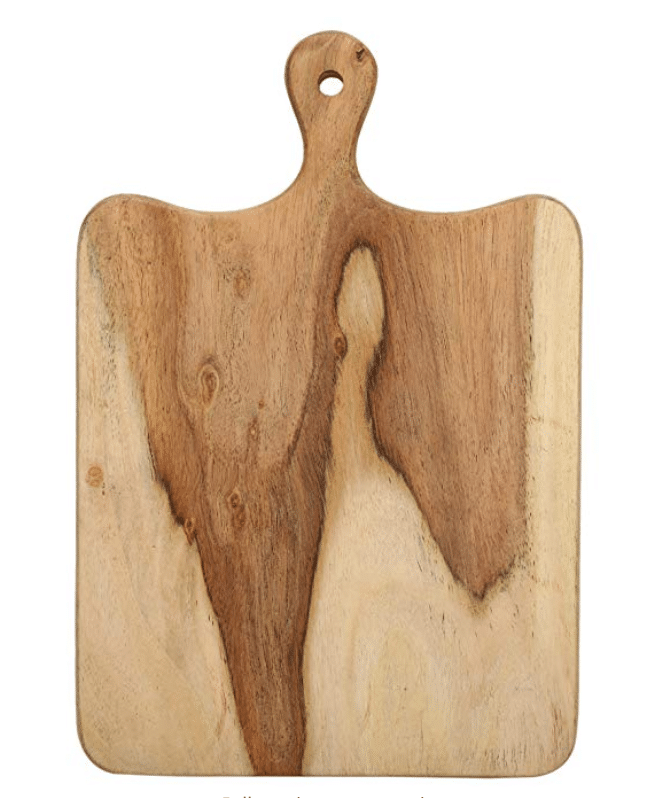
M&M Acacia Wooden Natural Wood/Wooden Chopping Cutting Board
Features: Made from acacia wood, easy to maintain, clean, light weight, easy grip handle, no added dyes or stains, has anti-bacterial properties, wouldn’t dull your kitchen knives.
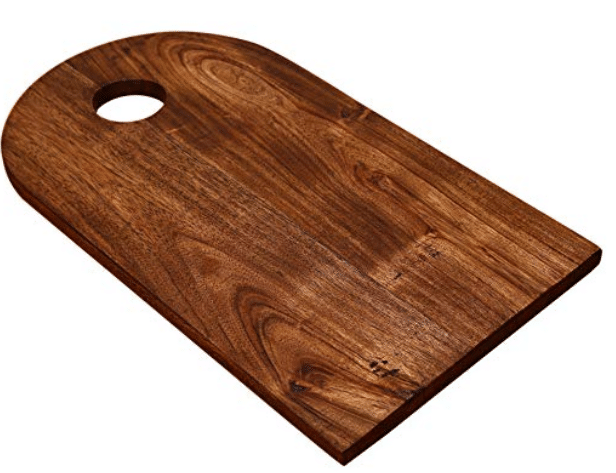
M&M Acacia Wooden Chopping Board Acacia Acacia Wooden Cutting Board
Features: Durable, easy to maintain, lightweight, dark brown acacia wood, no added dyes or stains.
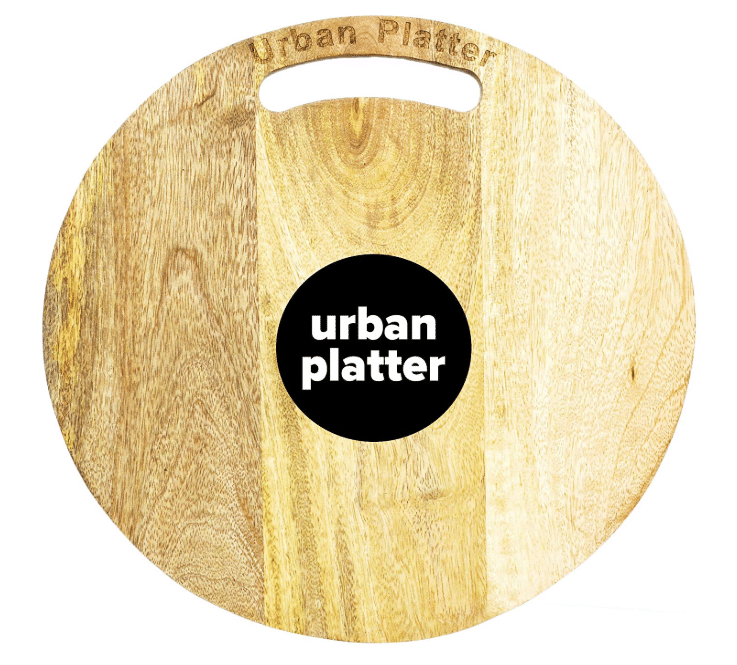
Urban Platter Natural Acacia Wood Round Cutting Board
Features: Known for its rich color, can cut vegetables, fruits, cheese, pizza, spices, etc, comes with wall hanging handle, durable.
Top 2 Advantages Of Hardwood Chopping Boards:
- Don’t scratch as plastic chopping boards do.
- Bacteria are unable to grow inside the knife scars which are really fine. Softwood boards scar easily and the larger scratches allow for bacteria to thrive.
Also Recommended:
Marble chopping boards are good alternatives too. They are easy to clean, are resistant to bacteria and the hard surface ensures none of the juices from the food are absorbed. They look good even after years, and can also be used as serving platters for dry bites.
Disadvantage: Weight
Marble boards are heavier than conventional wooden boards and if you need to shift them around on a daily basis, these could prove to be impractical.

Organic Home Marble Chopping Board
Features: Versatile: reversible surface, resists wear and tear, won’t damage knives, and helps to keep food from sticking.
Our Review Process:
The purpose of this review was to find the best material for chopping boards – wood, plastic, marble? And each of them further has several options available. Take the case of plastic chopping boards, for example; you will find plain boards, grainy boards, flat boards, folding boards and printed ones too. Within wooden chopping boards, what really matters is the quality of wood used.
The Types Of Chopping Boards We Selected:
Wooden Chopping Board
Marble Chopping Board
Plastic Chopping Board (High-Density Polyethylene)
Thin Plastic Chopping Mats
Premium Plastic Chopping Boards
Plastic Printed Chopping Boards
Plastic Folding Chopping Board
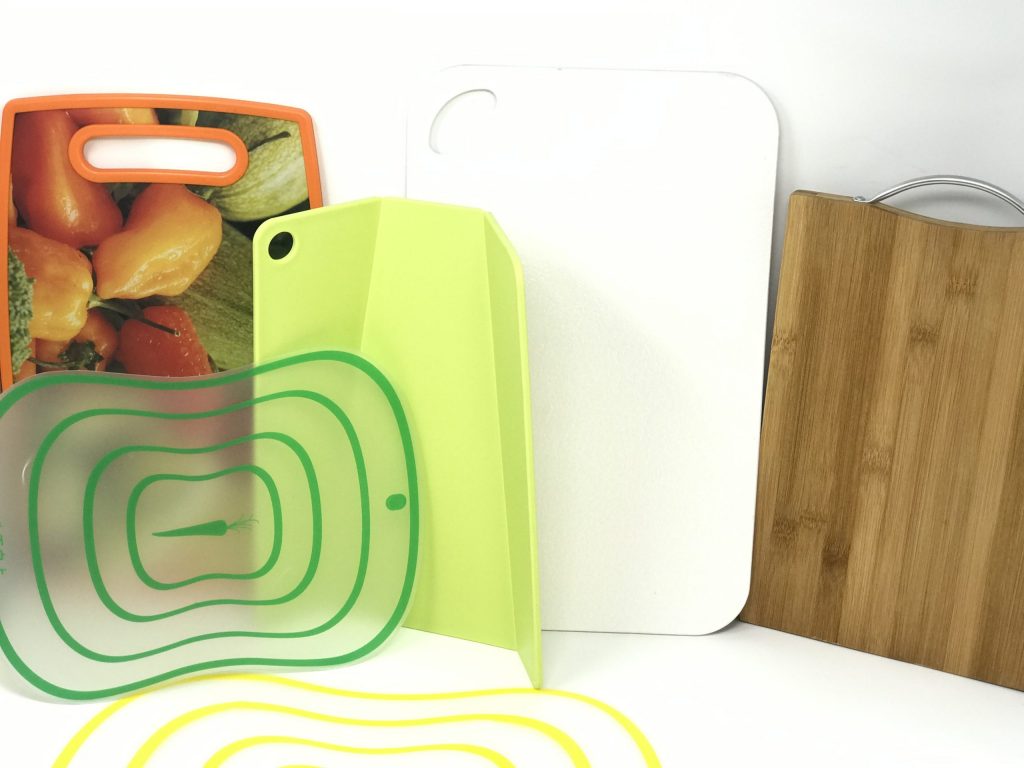
Who This Is For?
This review is for people who spend a lot of time in the kitchen themselves and for whom a chopping board is an integral tool. For them, it would be imperative to find a chopping board that cuts the best and doesn’t blunt knives.
This review is also for people who are extremely aware, and particular about issues of kitchen hygiene. We know chopping boards can be thriving grounds for bacteria and it isn’t as simple as buying any wooden chopping board out there. The type of wood is crucial here, and this review would help such people narrow down their search for a good alternative.
How We Tested:
We tested all boards (wooden, plastic and marble) in our review lab and conducted several sessions of chopping a mix of veggies – like onions, tomatoes, potatoes, and garlic.
Here Is What We Experienced:
Plastic Chopping Board: High-Density PolyEthylene
This is the most commonly available type of chopping board. These are light and cheap and popularly bought in India. However, unlike wooden boards, these plastic boards are soft, and there is a lot of ‘scarring’ by knives. Regular usage will mean a lot of deep knife marks which are usually great places for bacteria to reside. There is much debate about plastics and the effect of heat on them. Hence, plastic boards cannot be cleaned regularly with hot soapy water.
Thin Plastic Chopping Mats:
We found these mats very impractical. They don’t have an anti-skid surface and keep slipping while cutting.
Plastic Folding Chopping Board:
The fact that the two flaps of the board can fold and help transfer the chopped pieces into another bowl, did seem like a good feature when we began. However, on using it for a few times, we released the flaps never really go back to their original position and continue to remain a little ‘lifted’. This meant, that the chopping board does not rest flat on the kitchen top and leads to an uncomfortable chopping action.

Premium Plastic Chopping Boards:
While this was much more sturdy and stronger than the cheaper plastic boards, it still developed knife marks pretty quickly.
Wooden Chopping Board:
This was sturdy and weighed enough for the chopping to happen smoothly. Because the surface is not too rough and not too smooth, the cutting action is the smoothest on this. While a softwood chopping wood would develop knife marks quickly, a board made with hardwood would not only have a longer life, it would also be more hygienic. This why we recommend wooden chopping boards made with hardwood.
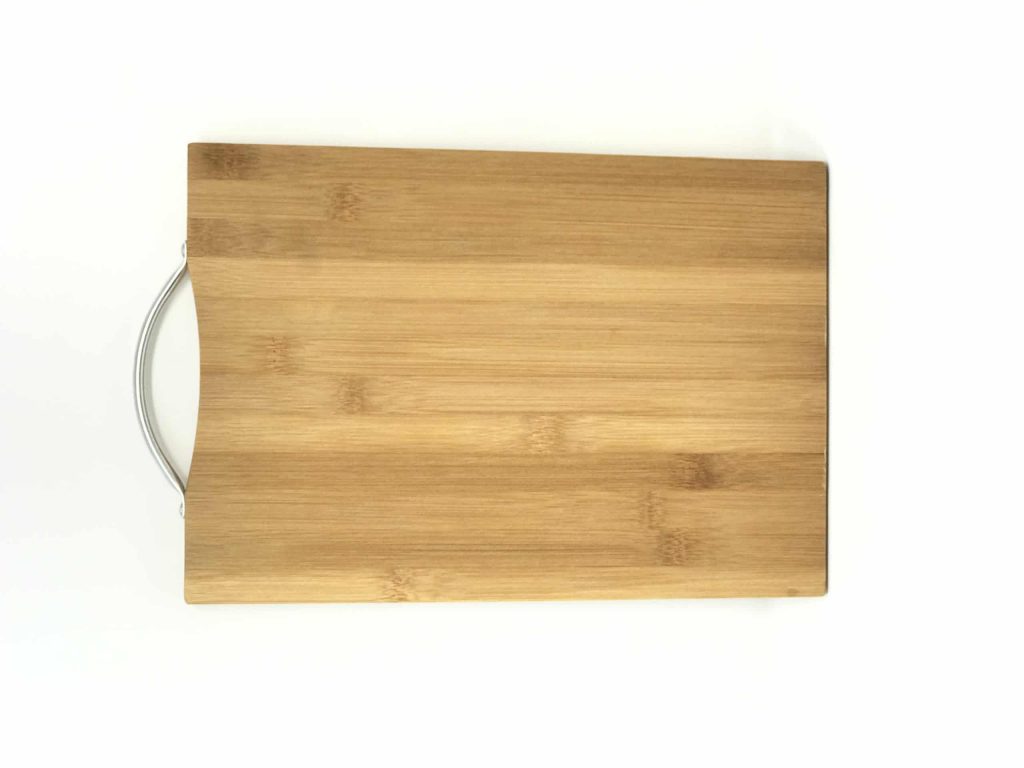
Plastic Printed Boards:
We didn’t find the quality of these up to the mark, even though these are widely available and do look attractive at first glance. Most of these usually have a ‘rim’ around the printed part and these create an imbalance when cutting, especially when you are either using a large knife or cutting 3-4 onions together.
Marble Chopping Boards:
These are bacteria resistant and very hygienic when it comes to cleaning. They also look really nice. The only disadvantage here is the weight. Heavier than wooden and plastic chopping boards, marble boards can be impractical in kitchens where homeowners like to ‘store’ away chopping boards. Taking them out on a daily basis could be cumbersome. If that’s not an issue, then marble chopping boards could be a good alternative or even your second chopping board.
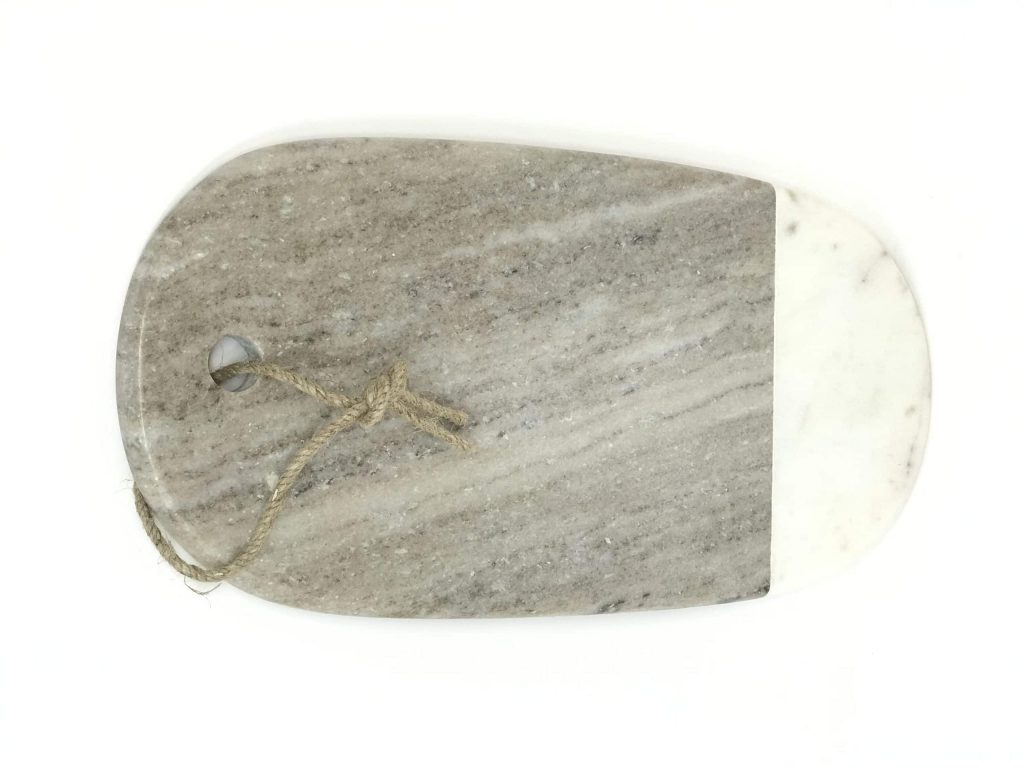
Parameters We Studied:
Material: Wood Vs Plastic Vs Marble
What material your chopping board is made of matters. While there is a lot of variety available, the ultimate decision should be made in favor of a material that is hygienic. We underestimate the power of a chopping board when it comes to maintaining the hygiene levels of our food. A material that does not scar easily, and does not allow bacteria to thrive is most suited.
Cutting Comfort And Safety:
Our kitchen can be a dangerous place, especially when the necessary precautions are not taken. Something as simple as a chopping board can lead to unnecessary knife cuts if it is slippery. A chopping board must always be skid-proof, and sturdy.
Durability:
We don’t change/replace our chopping boards like other consumables in the kitchen, so it makes sense that it should last a while. Despite frequent use, a chopping board should not make the edges of the knife blunt or create deep grooves where bacteria can thrive.
Plastic Chopping Board Vs Wood Chopping Board
Wood wins over plastic any day in the world of chopping boards. There was a time when the plastic board had suddenly become more popular owing to faulty beliefs that plastic is more hygienic. Research has shown that wood, more so hardwood, is a better surface to constantly chop and dice on. Not only is it kind to your knives, but hardwood also does not get deep cuts on its surface, as plastic does. The cuts on a hardwood surface as so fine, that simple cleaning and drying can clear out the bacteria. Plastic, on the other hand, gets deeper cut marks which provide a thriving location for the bacteria that can lead to food poisoning.
What is Cross-Contamination?
Generally speaking, cross-contamination is the process when bacteria or germs are transferred from one substance or surface to another, usually without any intent from the user. In the case of chopping boards, cross-contamination means the transference of germs/bacteria from one food item to another after it was cut on the same chopping board as the first. This movement of bacteria is typically most rampant when raw meat is chopped/cut on a chopping board, and without washing the board, the same surface is used to chop veggies/salads. The best way to avoid such a situation is to keep separate boards in your kitchen for meats and veggies. If you can’t do that, make sure you thoroughly wash the board between raw meats (which are more likely to contain bacteria) and veggies.
Watch Video: Essential Factors To Look For While Buying Chopping Board For Your Kitchen.
Conclusion:
Wooden Chopping Boards (made with hardwood) are the best, they are durable, cut and dice comfortably and most hygienic.
If you do agree with our review, please give it a thumbs up! If you don’t, please tell us why! And, which one is your favorite from this list.
Food & Beverage is a constantly evolving segment with new categories of products being launched daily. Our endeavor here is to help shoppers buy better. Our reviews are unbiased and all samples used during the reviews were paid for by us. Read our entire ethics statement here.


